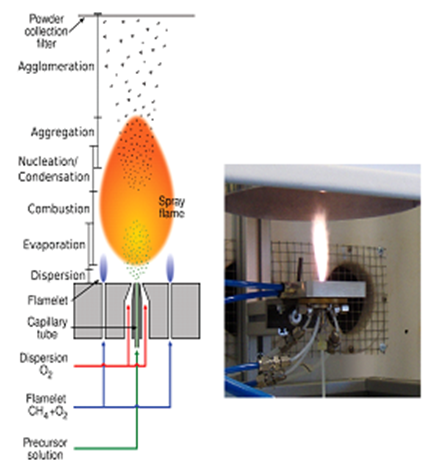Flame Spray Pyrolysis (FSP)
A flame spray pyrolysis (FSP) system, shown schematically in Figure below, is used for the synthesis of metaloxide and doped metaloxide particles. In FSP the precursor solution is fed through a capillary in the middle of the device. The liquid feed is then atomised with high-pressure dispersion gas fed through an annular aperture around the capillary tube. A premixed methane-oxygen flamelet ignites the aerosolized precursor solution resulting in the formation of a high-temperature flame within which the organometallic precursors decompose and the organic compounds undergo complete combustion. The metallic or semimetallic components of the precursor will then nucleate and condensate to form primary particles of pure metals or oxides. Some aggregation will take place in the high temperature region of the flame but rapid quenching due to efficient radiation and convection quickly stops the sintering. Thus the primary particles will remain small though they do form loose agglomerates in the gas stream, due to high particle concentration, and further during powder collection.
